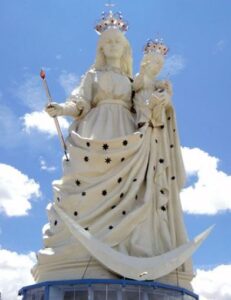10 Best Famous Monument in Campeche | Historical Building in Campeche

- By
- Aparna Patel
- |
- 15 May, 2023
- |
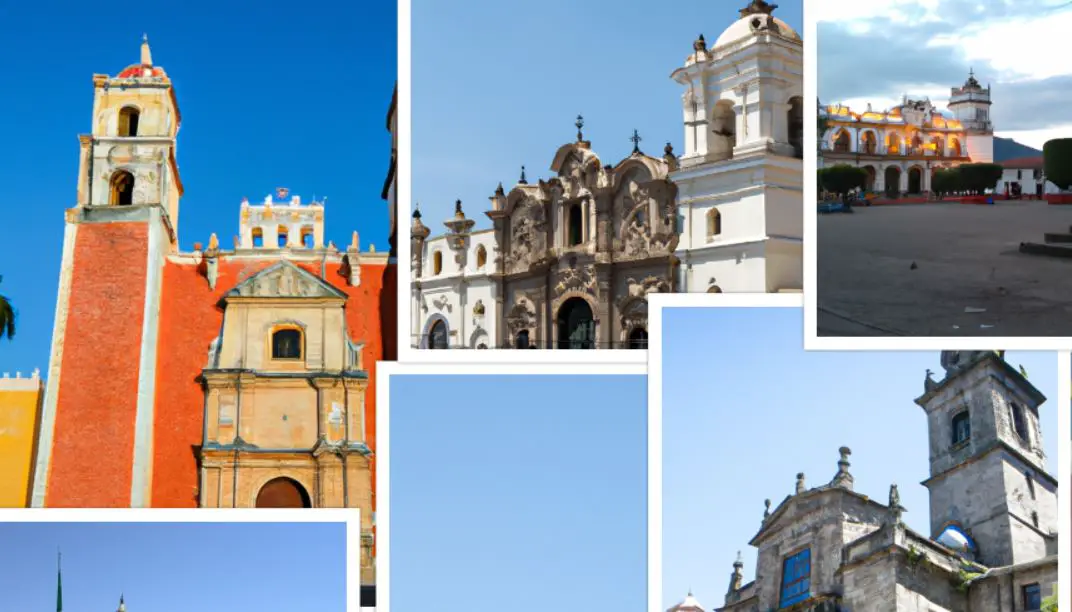
The ancient city of Campeche, located along the Yucatan coast in Mexico, is home to some of the most impressive and important historical monuments in the world.
From centuries-old fortifications to exquisite Mayan art and Spanish Colonial architecture, these monuments have stood the test of time and tell the story of Campeche’s past.
In this post, we will take a look at the best famous monuments and historical buildings located in the city of Campeche.
10 Famous Monuments and Historical Buildings To Visit In Campeche
1. Fuerte de San Miguel (Fort San Miguel)
Fuerte de San Miguel (Fort San Miguel) is a military fortress located in the city of Campeche, which was constructed between 1686 and 1693 in order to protect the area from seaborne attacks by European powers such as England and France. This fort is made of stone and was part of a larger system of fortifications developed by the Spanish in order to protect the port of Campeche and the city in general.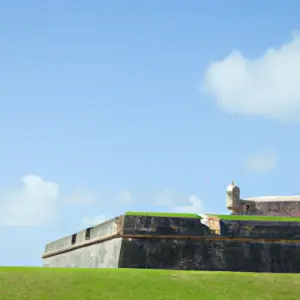
It is a very impressive structure, and is known for its cultural, architectural and defensive importance. The fort is now a UNESCO world heritage site and is open to visitors. There are guided tours of the fort and its surrounding areas, as well as educational and cultural activities for children and adults. Visitors can also learn about the maritime history of the region and explore the area by bike or foot, as well as seeing the many landmarks in downtown Campeche.
2. Catedral de Campeche (Campeche Cathedral), Mexico
The Catedral de Campeche (Campeche Cathedral) is the oldest church in Campeche, Mexico. Located in the historic center of the city, the church was built in 1558 and has been declared a UNESCO World Heritage Site. The building has survived several earthquakes, floods, and pirate attacks, and is one of the best examples of colonial religious architecture in the country.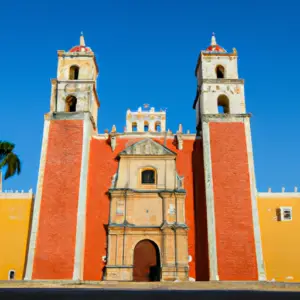
The baroque-style facade of the Campeche Cathedral is decorated with details such as pilasters, arches and medallions. The interior features three naves, side chapels, a choir loft and a main altar. The church also has a Sacristy, a library and an underground chamber from the former Franciscan monastery that used to occupy the site.
The Catedral de Campeche is home to one of the oldest organs in America and a large bell, cast in 1793, that was moved from the city hall to the church. The Campeche Cathedral also houses an extensive collection of colonial religious art, including paintings, sculptures and furniture, as well as sacred vestments, silver vessels and books.
Visitors can attend Mass at the Catedral de Campeche and take part in guided tours of the church Monday through Saturday. The church also serves as a venue for special events, such as concerts and theatrical performances.
3. Centro Regional de Campeche (Campeche Regional Center), Mexico
Centro Regional de Campeche (Campeche Regional Center) is a regional center located in Campeche, Mexico that focuses on the development of research, training and innovation in order to improve the well-being of the people of Campeche.
The center provides a variety of services to the people of Campeche, ranging from medical services such as primary care and specialty care, to educational services such as technical and professional training.
The center also offers a variety of other activities, such as running workshops and seminars, research and development, and providing consultation services. Centro Regional de Campeche is part of the national network of regional centers of the Ministry of Health, which works towards improving public health in Mexico.
4. Casa de los Pino-Ricalde (House of the Pino-Ricalde)
Casa de los Pino-Ricalde is an archaeological site located near the center of the city of Campeche in the state of Campeche, Mexico. It is believed to have been the home of a local Maya lord during the Early Classic Period, from 600 – 900 AD.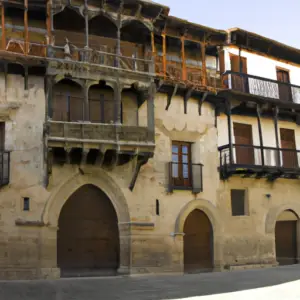
The house is built in what is known as the Puuc architectural style, which is a unique form of Mayan architecture characterized by intricate stone and stucco facades decorated with masks and animals. The house is a single-story construction with four rooms and a patio in the center.
Inside, one can find a number of artifacts, including pottery, jewelry, animal remains, and human remains. The house has been partially restored and is open to the public. It is one of the few pre-Columbian archaeological sites open to the public in all of Mexico.
5. Iglesia de San Francisco (Church of San Francisco), Mexico
Iglesia de San Francisco (Church of San Francisco) is an 18th-century Roman Catholic church located in the heart of Campeche, Mexico. Built in 1731, the site is one of the city’s holiest places and an attractive tourist destination. The church is dedicated to Saint Francis of Assisi whose image graces the main façade, along with a cross and a huge shield. Inside, you’ll find three chapels, a main altar and several side-altars. Unique features, such as the domed roof, masonry pillars and elaborate wood carvings, are among the many highlights.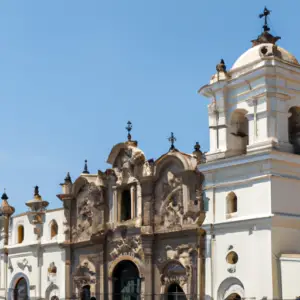
Iglesia de San Francisco is a stunning example of divine Spanish architecture. Each corner of the church has its own charm, offering plenty of photo opportunities and unforgettable memories. Since various cultural events take place here, it is worth checking the agenda and visiting during one of them.
The church stands eight blocks northeast of Plaza Principal, in front of Parque Fundidora. The nearest bus stops are Unidad Deportiva and Jardín Independencia, plus Las Gustavas and Miguel Hidalgo for the night buses. A few souvenir shops are located nearby. Guided tours and audio guides are available, plus you can get an information brochure from the church’s entrance.
6. Iglesia de Santiago (Church of Santiago)
The Iglesia de Santiago (Church of Santiago) is a historic Roman Catholic Church located in Campeche, Mexico. The church is one of the oldest churches in the city, originally constructed in the 17th century and is one of the best-preserved churches in Campeche. Situated in the heart of the city, the church was built in the colonial style with barrel-vaulted ceilings and a bell tower.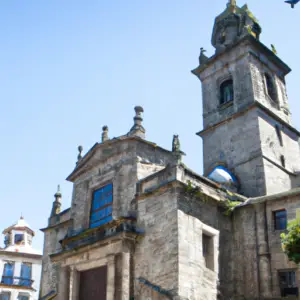
It has been restored and renovated throughout the centuries and is classified as a National Monument by the National Institute of Anthropology and History (INAH). The church stands as a testament to the city’s colonial past, with its intricate stone façade and traditional decorations.
The interior features an ornate main altar and an intricately carved pulpit, as well as several side altars that are dedicated to various Catholic figures, including the Virgin Mary and Saint Joseph. The Iglesia de Santiago is an important part of the city’s history and culture and is a popular tourist attraction.
7. Calzada de Los Frailes (Friars Walkway)
Calzada de Los Frailes (Friars Walkway) is an historic walkway in the city of Campeche, Mexico. The walkway is located in the historic center of Campeche and extends for about 1.2 kilometers (0.75 miles). It was built in the 16th century to connect the city’s most important religious buildings to the city’s main square.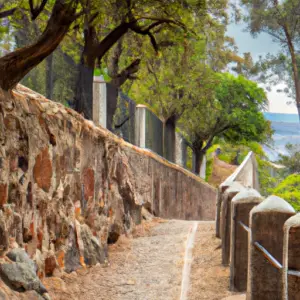
The walkway is lined with historic buildings and monuments, including a spiritual house and the ancient chapel of San Francisco de Asís. It was named after the Franciscan friars who roamed the area promoting – and spreading the culture of – Catholicism. The walkway is a popular site to take a leisurely stroll and enjoy the city’s colonial architecture. Most sections of the walkway are pedestrian-only so it’s easy to appreciate the scenery without the hustle and bustle of traffic.
Calzada de Los Frailes is an important part of Campeche’s history and is typically a popular tourist attraction. The walkway and its buildings were named a UNESCO World Heritage Site in 1999 in recognition of its significance.
8. Plaza Principal (Main Square), Mexico
Plaza Principal (Main Square) in Campeche, Mexico is a large public square in the center of the city. It is the main gathering place for the people of Campeche and is surrounded by some of the city’s most important historic buildings and churches. The plaza is named in honor of Bishop Antonio de Capmany y Zamorano and is one of the largest public squares in Mexico.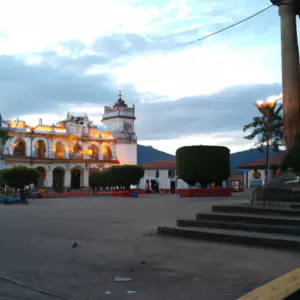
The main square is lined with trees and outdoor cafes, making it a beautiful and tranquil place to spend an afternoon.
The Plaza is often used for outdoor street markets and for special events like La Noche en Blanco (White Night). All of Campeche’s main attractions are easily accessible from the Main Square – some of the notable sites include the Chapel of San Miguel, the San Miguel Arcangel Church, the Government Palace, the Customs House, the Church of Our Lady of Carmen, and the City Hall.
The plaza is a popular gathering spot for locals, who come to the square to enjoy time with friends and family. At night, the plaza transforms into a vibrant hangout area, with live music and dancing often present. It remains crowded through the evening time and is a cultural hub of the city.
The Main Square is often used as the starting point of guided tours of the city. Visitors can enjoy the city’s Spanish colonial character as they explore the adjacent streets, which are lined with grand buildings, vibrant market stalls and restaurants. The Plaza is also a great place to sample the local flavors, with many regional dishes available.
Plaza Principal (Main Square) is a beautiful and vibrant part of the city of Campeche and an important cultural gathering spot for the locals. It is a must-see for any visitor to the city.
9. Zocalo (City Square)
The Zocalo (or City Square) of Campeche is a popular public gathering place and center of activity in the city of Campeche, located in the state of Campeche in Mexico. It is the main square of the city and has functioned as a public space since the colonial period.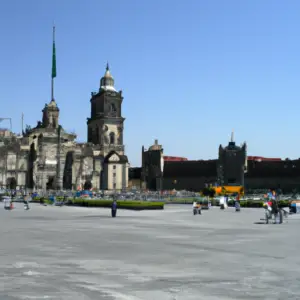
The Zocalo was officially declared a place of historical and cultural importance in 1996 and features features such as a grand Spanish colonial-style cathedral, several statues, the Government Palace, and the Independence House Museum.
The square is also a common sight to see in Campeche during the Carnivals. The locals of Campeche often gather there to celebrate during the festivals, which involves colorful costumes and popular music.
The Zocalo is also the point of departure for many of the city’s important activities and events, for example the annual Mochitlan event and the Festival of the Candles. It is also used as a space for political meetings and protests.
In the center of the plaza is a fountain with a design symbolizing the traditional Papantla Flyers, who do a ritual dance high above the ground with 4 ropes from a tall pole.
In the evenings, the square is illuminated and transformed into a magical place. Strolling musicians and colorful street vendors often fill the air around the plaza, making it a particularly vibrant and beautiful place to visit.
Overall, the Zocalo of Campeche is considered one of the most important squares in Mexico and a very iconic colonial space.
10. Monumento a la Fiesta de la Virgen de la Candelaria (Monument to the Festival of the Virgin of the Candelaria), Mexico
The Monumento a la Fiesta de la Virgen de la Candelaria (Monument to the Festival of the Virgin of the Candelaria) is located in the eastern part of the city of Campeche in the Yucatan Peninsula, Mexico. It was built in 1997 to commemorate the 400th anniversary of the festival, which is celebrated annually in the city of Campeche. The monument stands 39 meters tall and was designed by Mexican architect Essy Plascencia. It is made of steel and concrete, covered with polychrome mosaic.
The monument recalls the story of the Virgin of Candelaria’s arrival in Campeche in 1597. The story goes that the evangelizers of the “New Spain” brought with them five images of the Virgin Mary made of Mexican clay. When they stopped by the edge of a lake on the outskirts of Campeche, the images suddenly disappeared and they were later found in the form of five oil lamps in the same spot. This reportedly caused the locals to believe in a miracle and from that moment, the Virgin of Candelaria became the patron saint of Campeche.
The monument was unveiled on August 15th, 1997 as a tribute to this story. It is composed of six steel sculptures symbolizing the evangelizers, two lower figures representing the natives of Campeche, and two upper figures representing the Virgin of the Candelaria. The sculptures are made of steel and covered with polychrome mosaic, making it one of the most colorful monuments in the city.
The Monumento a la Fiesta de la Virgen de la Candelaria has become a symbol of life and faith for the citizens of Campeche. It serves as a reminder of the city’s rich cultural and religious history.
Search Posts
Latest posts
-
5 Mar, 2024
How to avoid drinking vodka?
-
5 Mar, 2024
Passing through airport security with autism
Popular posts
-
5 Mar, 2024
Why prohibit engine braking?
-
5 Mar, 2024
How to avoid drinking vodka?
